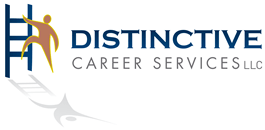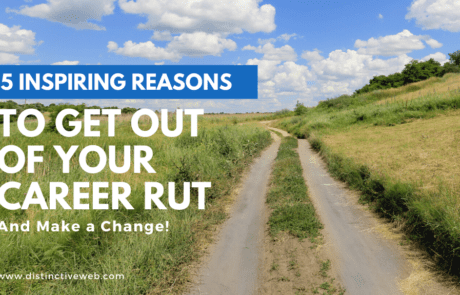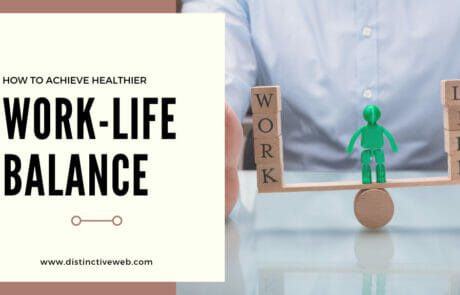
Too many of us have just fallen into a career or selected a career based on what others thought was good for us. Then with life being what it is, and the additional expenses we all face as adults, we may just stay on that path, not because it makes us happy, but because we don’t think we have another choice. But we always have choices.
Choosing to design your career puts you back in the driver’s seat. Rather than looking at your career as a static, unchangeable fact of life, you opt to view your career as an adventure and an ongoing process rather than a destination.
Designing your career empowers you to dare to dream, to consider and select from the possibilities, to consider multiple options, and to intentionally select the path that energizes you and brings you joy.
The career design process starts with honestly evaluating your current career and asking yourself if you are truly happy. If not, it is time to begin designing. You deserve to be happy. You deserve a life that is fulfilling and satisfying. You deserve a career that reflects your interests, your passions, and your joy. And you deserve to live a life in which you can become the best version of yourself.
What Does It Mean to Design Your Career?
The first step for most people is understanding and internalizing the fact that it is okay to want something new and different.
You don’t have to let life just happen to you. It is okay to take control and start building the career that makes you happiest.
Of course, you must also accept responsibility for what happens in your career and the choices you have made that brought you to this place in life. Your choices led you to where you are and your actions (or inaction) have led to your present circumstances. Recognizing this will help you accept the responsibility for all your decisions moving forward.
You must also commit yourself to doing the work to design a career that will bring you true fulfillment. It will take work and the path won’t always be easy. That is why you must commit to not settling for less and for designing a career that will allow you to follow your dreams and reach your true potential.
Overcoming the fears and anxieties that can hold you back is another important step. Some fears may have a basis in reality, such as needing to make enough money to pay your mortgage. Others might just be internal demons trying to scare you away from change. Whatever they are, if you have committed to designing your career means being relentless in working through and letting go of the unreasonable fears, while finding solutions for the more reality-based fears. Yes, sometimes it might seem that a challenge is too big to hurdle, but there are almost always solutions if you put your mind to it.
Being Proactive Will Change Your Life
Being proactive in your life places you firmly in control of your own destiny.
Being proactive is the opposite of being reactive, when you let life unfurl before you and spend all your time acting in response to whatever is thrown your way. When you learn to reframe your mindset towards being more proactive, you will realize many benefits in your career and life.
Being proactive means that you take action to put you on the path of where you want to be, to take control of all life’s circumstances, and to regain power over your future career. There are profound benefits of living proactively. Here are just a few:
- Change will stop feeling so scary. When you live a reactionary life, you fear change and the unexpected. When you are just reacting to your life constantly, failure can seem very intimidating, even to the point that you no longer are able to make decisions.
- You will make better decisions. When you wait for life to hand you problems, then react to them, you are forced to make quick decisions and with few options. Making better choices means thinking ahead and planning for possible contingencies. Being proactive gives you better information, provides you with more to consider, and ensures you have the resources you need to put your plan into action. When you are reactive, you spend too much time being unorganized and unprepared for what life has in store, which means you are not making the best possible decisions about how to design the career you really want.
- Your problem-solving skills improve. Living a proactive life means you think through potential unforeseen problems and have a plan for how to handle those. It also means you are able to adapt to these issues and setbacks more effectively, accepting them as part of the process rather than insurmountable challenges.
The Career Design Process
Now that you have committed to designing your career and living life proactively, you much do the work to be confident about what it is you really want and who you think the greatest version of yourself really is. Check in with yourself and spend some time in reflective thought about your dreams, ambitions, current frustrations, and fears.
Try your best to block out the business of daily living and just focus on being who you really are. As you are reflecting, it is worth it to write down your thoughts and questions.
Staying open-minded, curious, and willing to experiment at this stage will help. Be willing to embrace the evolving nature of what it means to “become” yourself.
There are programs, such as our Reinvent Yourself! program, that can help in this process.
Once you have done your exploration, it will be time to choose from the possibilities and then take action.
Here are more details on the steps you will follow in the career design process. Of course, this is just a general outline. Everyone is unique. So use this as just a general guideline for your individual process.
Revisit the Process as Needed in the Future
Career design is an ongoing, never-finished process. Regularly reevaluate and return to your ideal lifestyle vision to see if that is still your ideal and if you are still moving forward toward it. If you decide a change is necessary, you now have the skills to continually adjust or even reinvent if you choose. It is your life! Live a life you will love!









